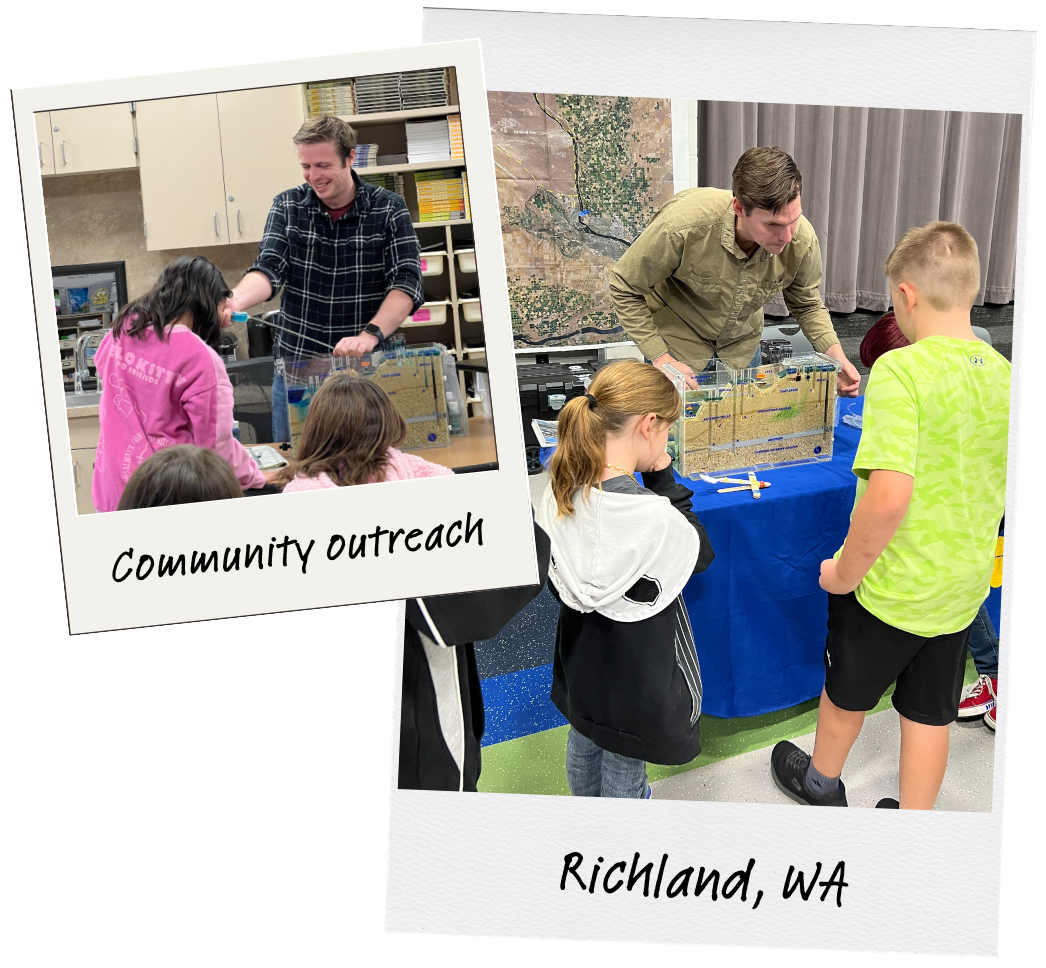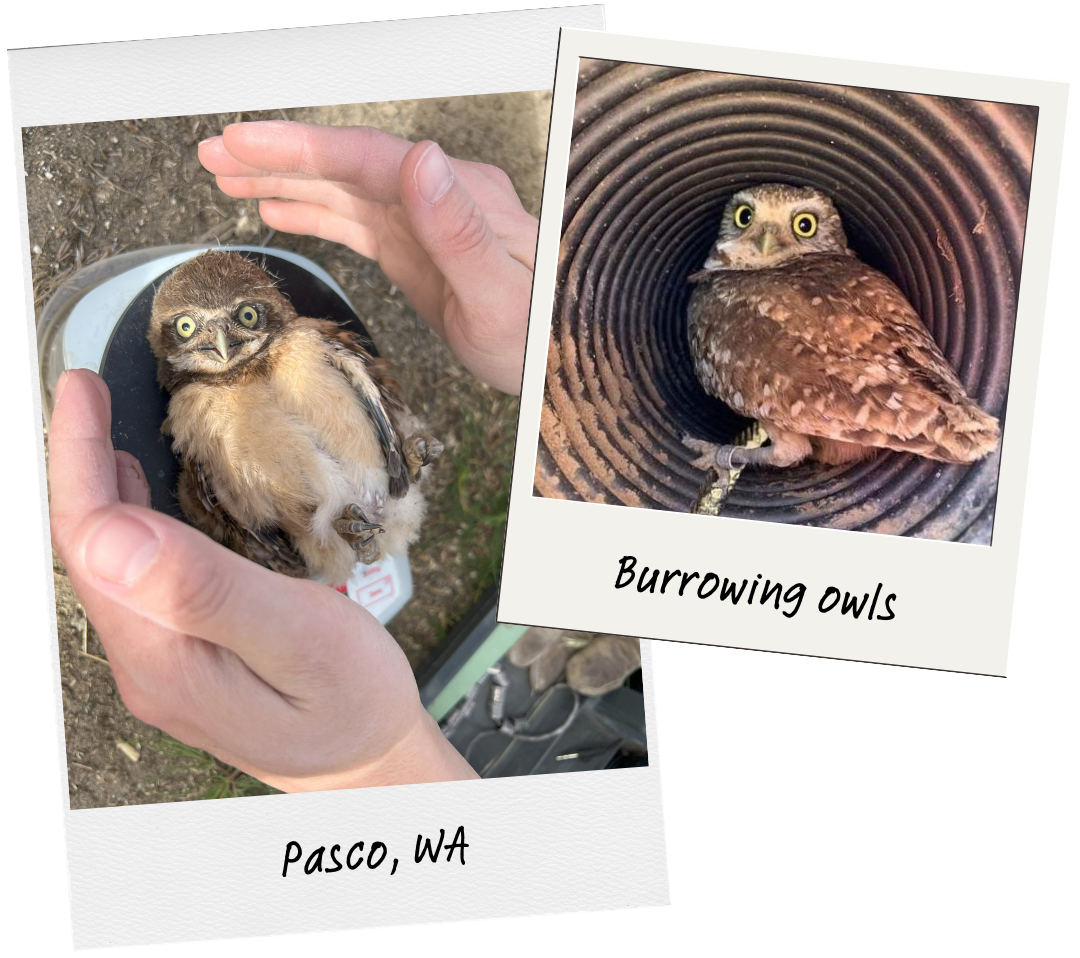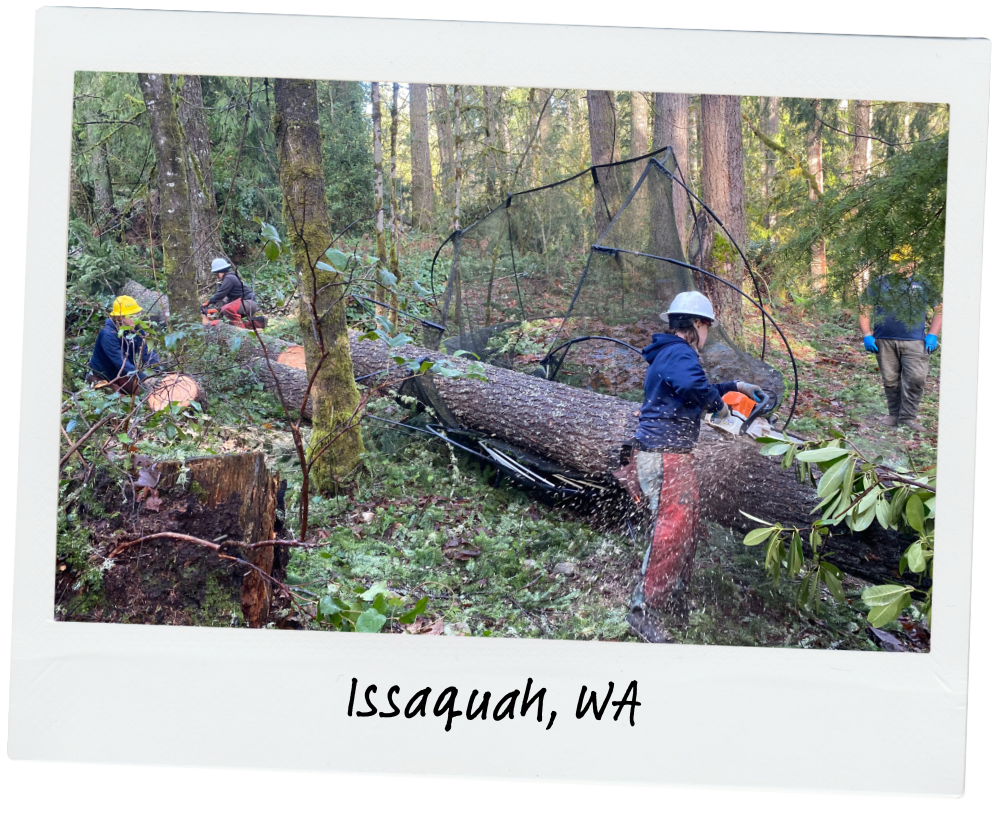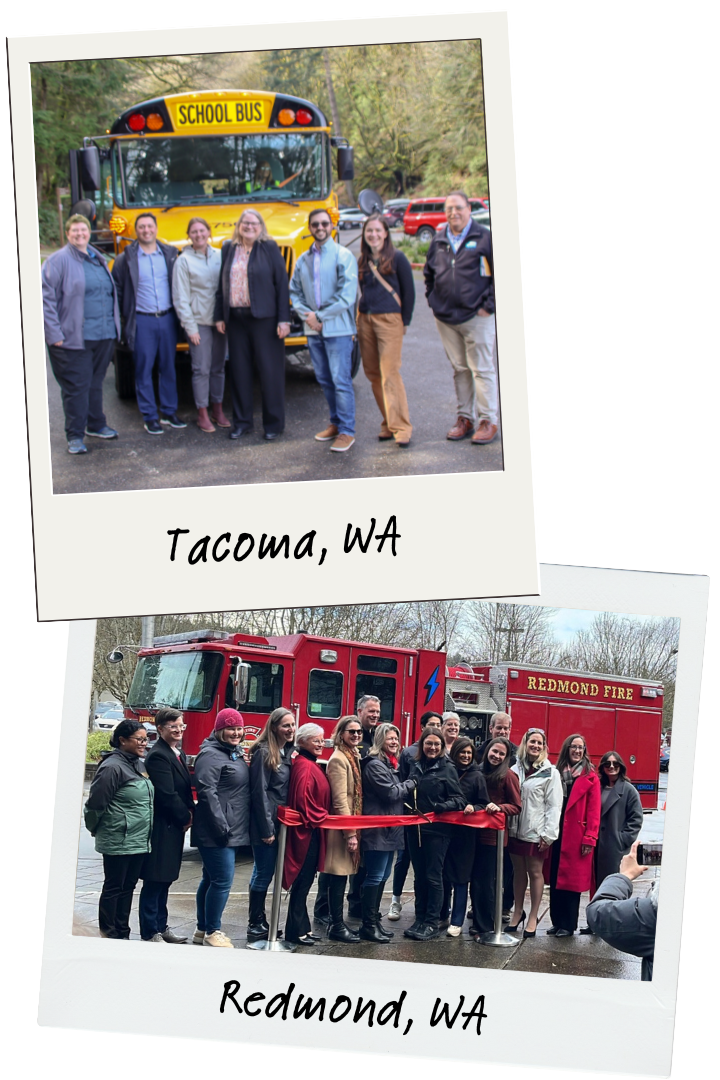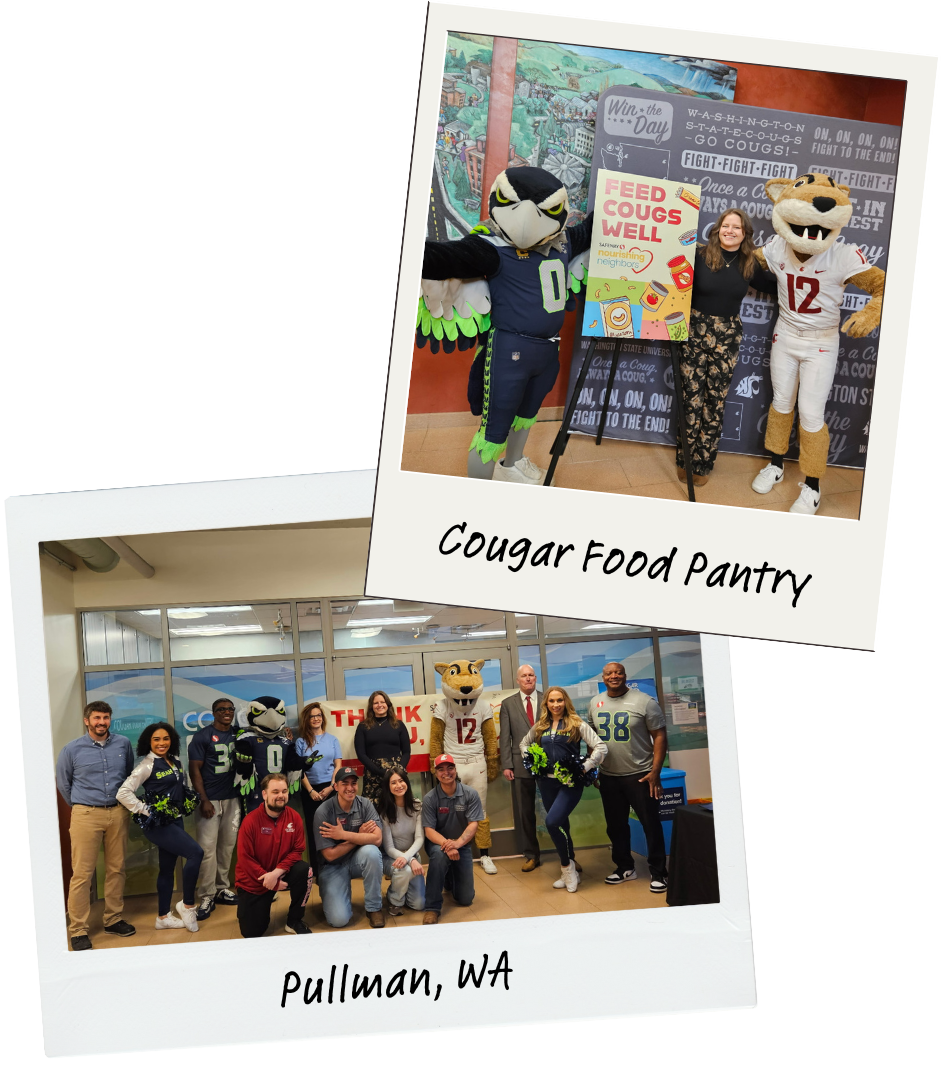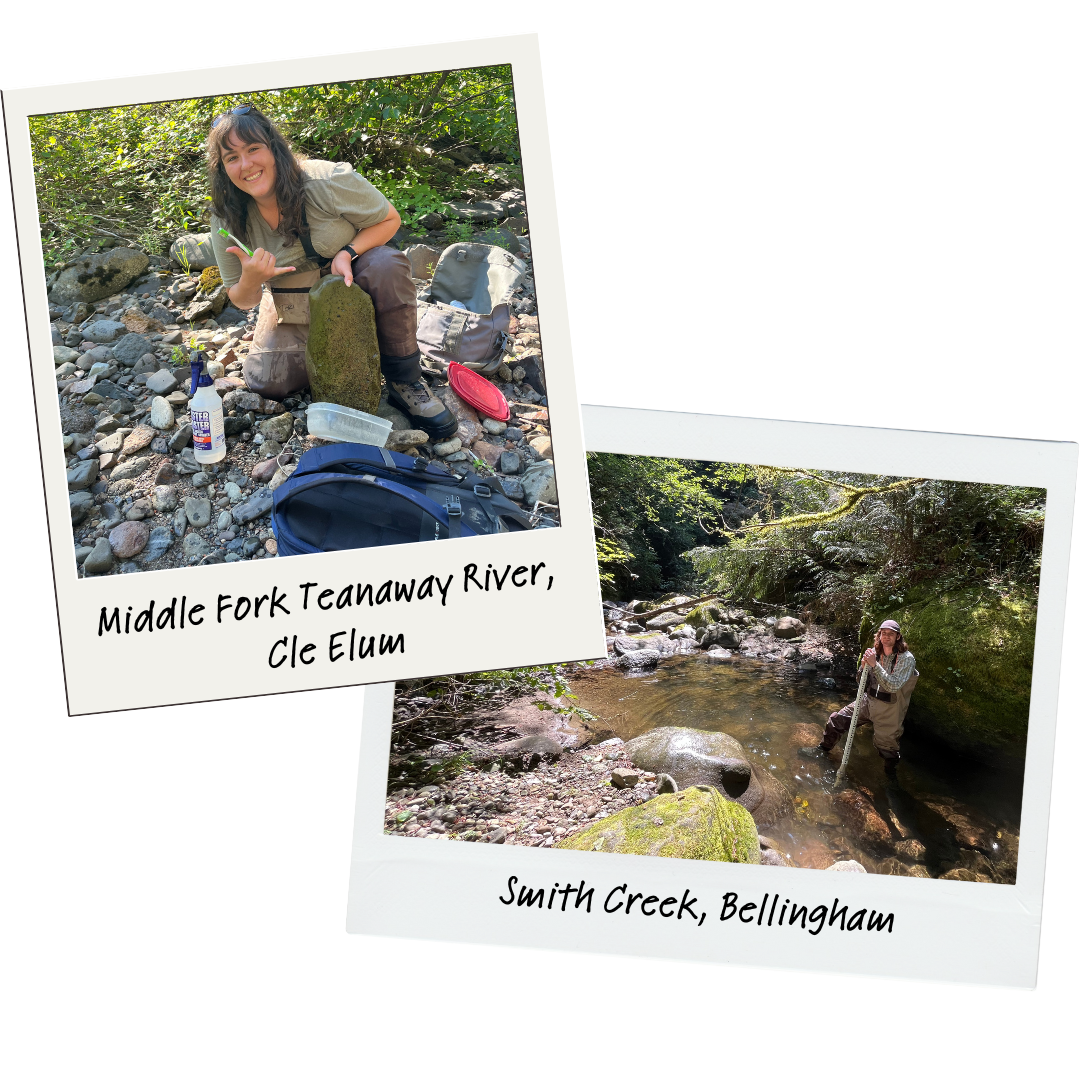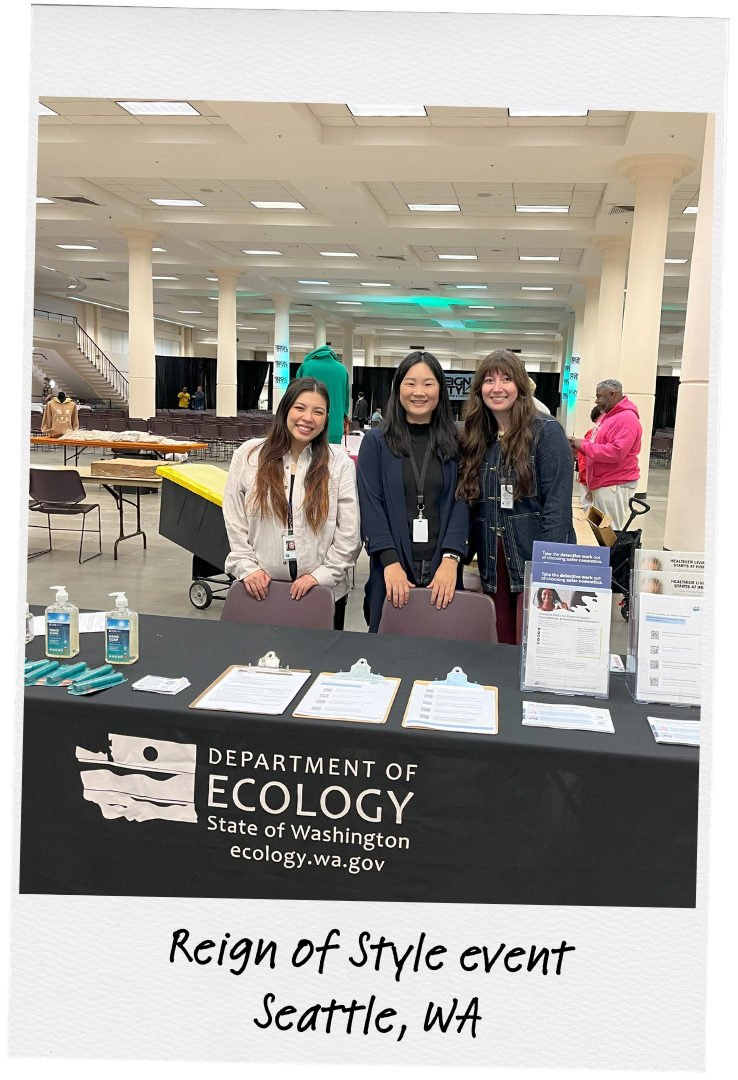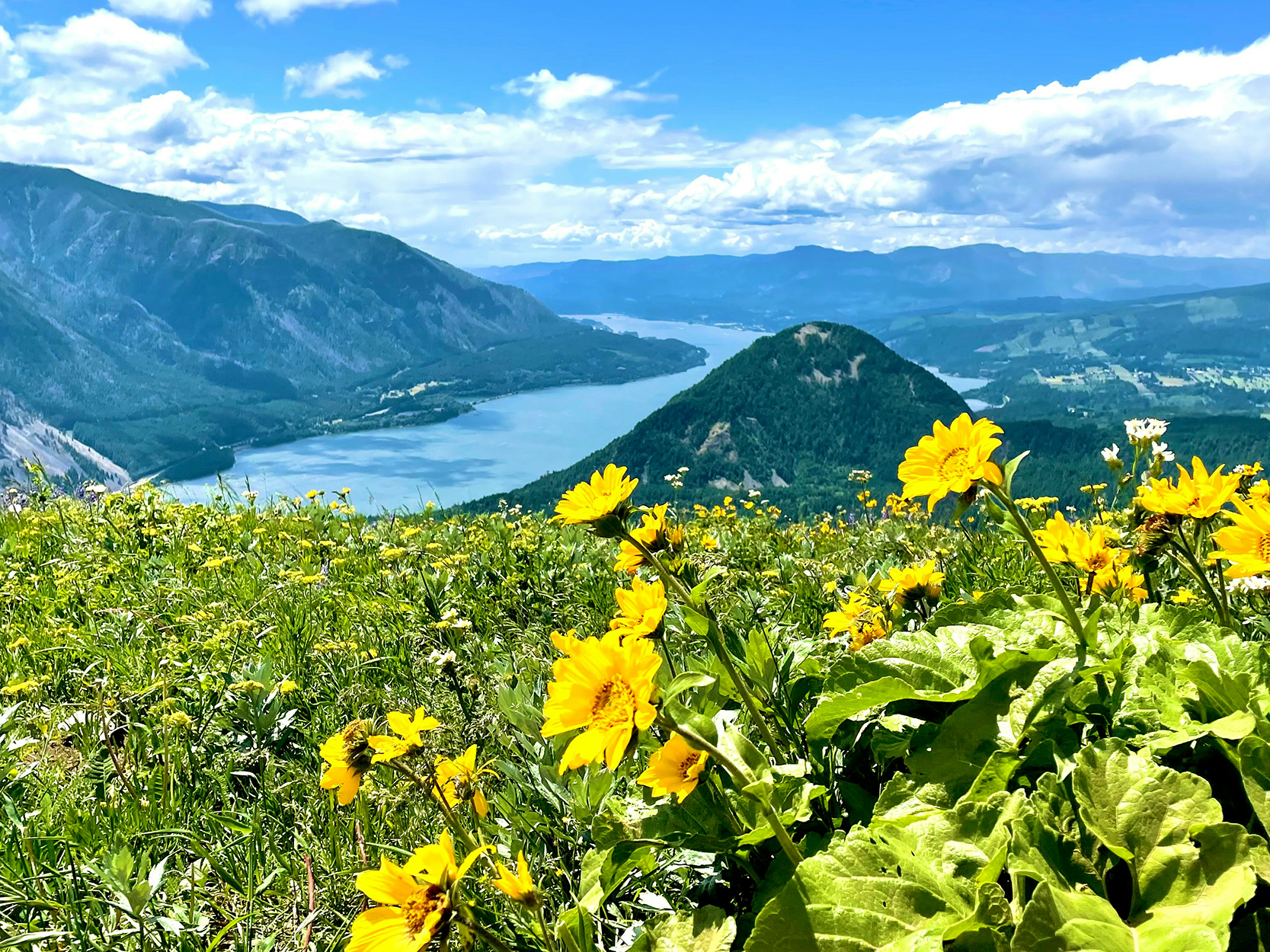
Every year on April 22, millions across the planet celebrate Earth Day. It's an opportunity to honor our planet and a reminder that we all can take action to protect it.
For Ecology, Earth Day is more than just one day a year — it’s our mission every day. From responding to climate change, protecting air and water, reducing waste, cleaning up contamination, and preventing and reducing toxic threats, our staff are the driving force behind our environmental work across the state.
We show up every day to work towards a brighter future for the planet, and we don’t do it alone. Our partnerships with local and Tribal governments, state agencies, organizations, and communities all over Washington make this work possible.
As we reflect on Earth Day this year, we’re taking a moment to share and celebrate some “snapshots” of our work in communities near you.
Hanford: Cleaning up for the community
Ecology partners with EPA to regulate the U.S. Department of Energy’s groundwater cleanup of Hanford. More than 35 billion gallons of contaminated groundwater have been treated since the 1990s — out of that number, more than two billion gallons have been treated each year for the past 10 years. We’re also on track to begin solidifying nuclear waste in a glass form through a process called vitrification this summer. This includes heating up two first-of-its-kind melters to 2,100 degrees, creating test glass, and soon going through environmental testing.
This cleanup work is important for both current and future generations surrounding Hanford and the Columbia River. Our team is passionate about engaging with the community, especially students, to share more about Hanford. Completing Hanford cleanup is going to take a long time — at least into the 2070s. Keeping the public aware, informed, and engaged for the long-term is crucial for getting this multi-generational cleanup done.
Partnerships in Pasco provide habitat for burrowing owls
This facility takes wastewater from food processing companies and treats the water (using algae) so it can be used in other ways. Recycling water reduces the burden on the city's public wastewater treatment plant and helps protect water quality in the Columbia River.
When the Pasco facility was expanded, the City of Pasco was awarded financial support from Ecology’s competitive clean water funding. We partnered with Washington Department of Fish and Wildlife to ensure that shrubsteppe habitat for the burrowing owl was protected in the process. Artificial burrows were installed on the site to house any owls that were displaced by construction. This project navigated the challenging situation of displacing owls from their natural burrows during the non-breeding season, without a noticeable loss of their productivity during the breeding season.
This project serves as an important example of how careful planning and mitigation strategies can support community infrastructure without negatively impacting our ecosystems.
Supporting communities impacted by storms in Issaquah
"The cyclone took down a ton of trees and branches in the Mirrormont neighborhood near Issaquah, and we were sent out to help homeowners move debris off their property to be collected by the county,” said Aidan Manzanares, a deployed crew member. “It was a lot of hard work, but it was an unforgettable experience to help these homeowners!"
And our help has extended beyond just our state — WCC has deployed on two waves of hurricane relief efforts. After deploying to St. Lucie County, Florida, to support Hurricane Milton relief in November, WCC also joined the third wave of Hurricane Helene relief efforts in Asheville, North Carolina.
Fighting air pollution with electric vehicles
Earlier this year, Redmond unveiled Washington’s first electric fire truck. The new truck will keep around 20 tons of greenhouse gas out of the air each year. That’s equal to the emissions from driving a gas-powered car around the world twice.
Most recently, Tacoma Public Schools showed off 14 new EV buses, 3 of which were funded by Ecology grants. And even more buses are on the way! Our partnership with Tacoma Public Schools, First Student, and to Tacoma Public Utilities (for building out charging infrastructure) ensures that students will have a cleaner, quieter commute to school.
Reducing food waste and feeding communities
The pantry is a resource for college students to provide free food and basic needs items. Stocking this pantry with donations helps keep food out of landfills and provides a service that is crucial for the one-in-four college students who experience food insecurity. Connecting food to the people who need it most is good for both our communities, and the environment.
Check out our Use Food Well page for information about food donations, meal planning, proper storage, using leftovers, and more ways to keep food waste out of landfills.
Measuring the health of our streams
Each stream is different, providing new opportunities to learn about stream dynamics and the biological communities living in them. Healthy streams tend to have cold water, plenty of shade, an appropriate pH, and not too much silt or sand — creating a thriving habitat for aquatic critters. We can also track when sites have poor stream health due to physical and chemical “stressors” that vary in each region.
Overall, our staff have surveyed 1,920 streams across the state. This consistent, long-term data allows us to keep a pulse on the health of Washington’s streams and track changes over time.
Safe cosmetics will never go out of style
We also hosted a Q&A session on the new law and how businesses can comply. This event was a valuable opportunity to empower beauty professionals with the knowledge and resources to safeguard their own health and that of their clients by reducing exposure to toxic chemicals in everyday products.
Learn more about Washington’s Toxic-Free Cosmetics Act and how we’re restricting use of toxic chemicals in cosmetics, so the products you use every day are safer.
What you can do
Protecting the planet is a team effort. We’re proud of the ways our staff and partnerships accomplish this important work — and we invite you to join us! There are actions all of us can take to protect Washington's environment. On Earth Day, and every day.
Visit our Earth Day page to find ways you can join us in protecting the environment (including printable coloring and activity pages for kids).
Subscribe to our blog and follow us on social media to see regular updates on our environmental work.


